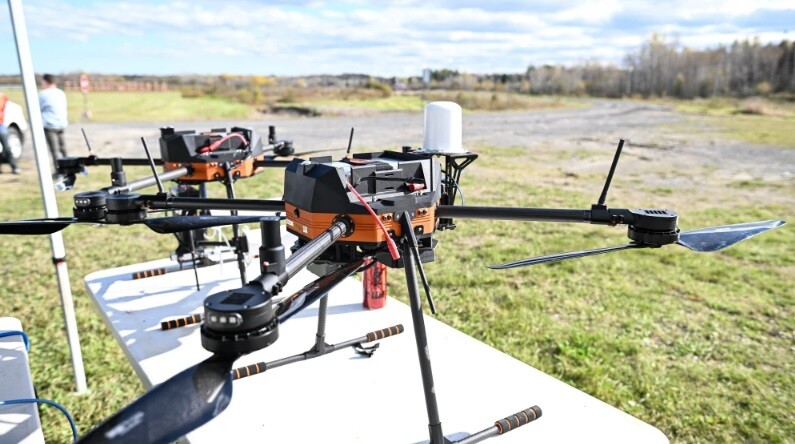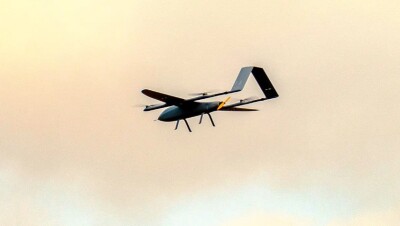Viasat, a global leader in satellite communications, has successfully demonstrated the capabilities of its VelarisTM connectivity solution for Uncrewed Aerial Vehicles (UAVs),  following a recent power utilities assessment using a small, lightweight terminal developed by its partner, UAV connectivity platform provider, Gotonomi.
following a recent power utilities assessment using a small, lightweight terminal developed by its partner, UAV connectivity platform provider, Gotonomi.
Powerlines are notoriously difficult to assess due to their installations, which span large distances in remote locations and include pylon heights ranging from 80 to 200ft. UAVs offer several benefits in comparison to traditional monitoring and inspection tools, such as faster arrival at a scene and unique vantage points from the sky. The addition of satcom technology simplifies the required communications infrastructure and allows a UAV to be operated remotely from a command post, with the ability to stream more extensive data and insights in real-time.
The long-range demonstration, led by ARA Robotics, involved two ARA-405 UAVs, state-of-the-art sensors, and beyond line-of-sight (BVLOS) operations – controlled from a distance of 11 kilometres. The first drone was used as a relay station for Industrial, Scientific, and Medical (ISM) radio for Command and Control (C2) and video, and the second was used as the primary drone for BVLOS operations carrying the video camera, sensors and Satcom payload. This project was conducted in collaboration with the National Research Council of Canada, which has unique expertise and facilities dedicated to research and development in the field of advanced air mobility. This project was made possible with funding from the Innovative Solutions Canada program.
The ARA-405 is equipped with the Gotonomi Velaris SATCOM module - a small, lightweight (300g / 0.6 lbs) unit - providing a secondary command and control link. This redundancy allows the vehicle to choose between SATCOM or line of sight ISM band radio frequency, in the event that one of the two links became degraded, ensuring reliability and resilience of the communications network and thus keeping the operator in constant control of the UAV.
Guillaume Charland-Arcand, Chief Technology Officer & Co-founder of ARA Robotics, said: Viasat and Gotonomi were instrumental in providing the Velaris satcom module, a product that had the perfect size weight and power (SWaP) characteristics for the ARA-405. The integration was easy and straightforward, and we received excellent technical support when it was required. The performances of the module were validated in flight and matched their specification. Multiple times during the flights, the communication system switched seamlessly to the Viasat network which allowed us to keep command and control over the UAVs. Needless to say, without this product, the long-range demonstration would not have taken place.
Anthony Spouncer, Senior Director of Advanced Air Mobility at Viasat commented: “We were delighted to support the flight demonstrations and validate the reliability of our satcom in action. The new Velaris terminal provided command and control connectivity at multiple points during the flights when the primary 2.4Ghz ISM communication link was disrupted, and operations reverted to the onboard satcom for the system’s communication needs. Demonstrations such as this highlight the capabilities satcom brings to beyond line-of-sight operations in rural environments, and we look forward to working with partners on similar projects in the future.”
Roderick Van Den Bergh, Operations Manager at Gotonomi said: “We are excited to see Gotonomi’s platform enabling BVLOS operations for drone operators. We think this is a great demonstration of how our technology can facilitate the ecosystem to develop new capabilities including command and control for safety, telemetry, data services, voice and video streaming.”
Source: Viasat
















Comments